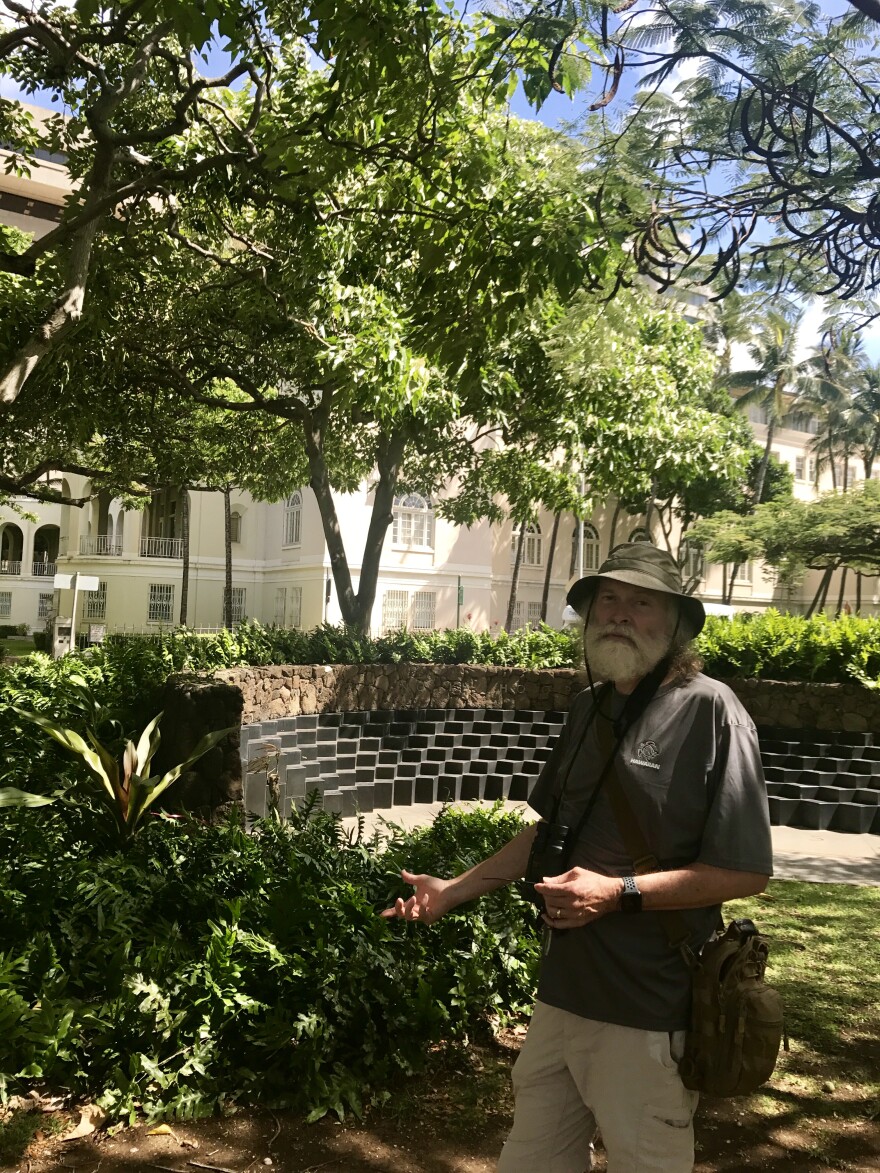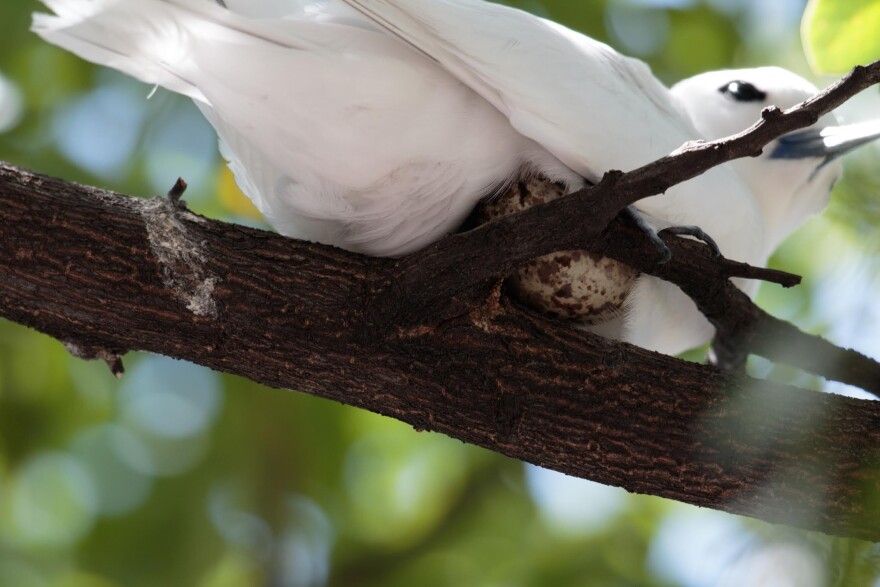Natives are recolonizing urban Honolulu. Native birds, that is. The white tern or Manu O K? is thriving in Hawai?i’s most populous city, and so is its fan base – the Hui Manu O K?. HPR reporter Ku?uwehi Hiraishi joined a group of white tern enthusiasts on a bird expedition in downtown Honolulu.

Rich Downs scans the kukui trees in one of downtown Honolulu’s Manu O K? hotspots. About a half dozen or so Manu O K? fans join him at the corner of Richards Street and South Beretania. They’re all looking for a pure white sea bird with dark black eyes and a pointed black beak.
"They are an understudied bird. I think anyone who knows the studies of birds in the Pacific would agree they’re just understudied in part because their numbers are increasing, they’re not endangered."
Over the past 14 years, the Manu O K? population has more than tripled from 700 to 2,300 here on O?ahu. That's according to a survey done by the state Department of Land and Natural Resources. And the population seems to concentrate only in urban O?ahu. (Click here for an interactive map of active nesting sites.)

"In Hawai?i they only breed and they only occur in the Northwest Hawaiian Island and in Urban Honolulu. Nothing on the Big Island. Nothing on Maui. Nothing on Kaua?i. And those are the islands we think of as having more nature."
Keith Swindle is a biologist with a badge. The special agent for the U.S. Fish and Wildlife Service rescues white tern chicks that have fallen from trees in some of Honolulu’s most high-traffic areas.

"On some of the streets here in Honolulu they can be sometimes just literally feet and even inches above busses zooming right under them."
Oddly enough, it’s the white tern’s un-birdlike features that give it such wide appeal, says Katie Gibson a student studying the white tern at Kapi?olani Community College.

"The most obvious thing that most of us would point out to you is they don’t build a nest and they’re one of the only indigenous species that we can see here in the city."
"Unlike other birds that lay eggs in trees, these guys don’t build nests. So they have to look for structures within a tree that will help to keep the egg in the tree," adds Downs.
Ten years ago, the Manu O K? was designated the official bird of the City and County of Honolulu. And while it is listed as threatened under state law, the Hui Manu O K? is hoping to raise the profile of their feathered friend with a festival modeled after the success of Oregon’s Blue Heron Festival.

"Everybody, every citizen in the city of Portland, Oregon, knows what a Great Blue Heron is, and its largely because of that festival, where they do poetry contests and art, and beer brewing contests. There are beers named after the Great Blue Heron," says Swindle.
The Manu O K? Festival kicks off tomorrow at 11 a.m. on the grounds of the ?Iolani Palace, and as of yet, no known Manu O K? beer to report.




